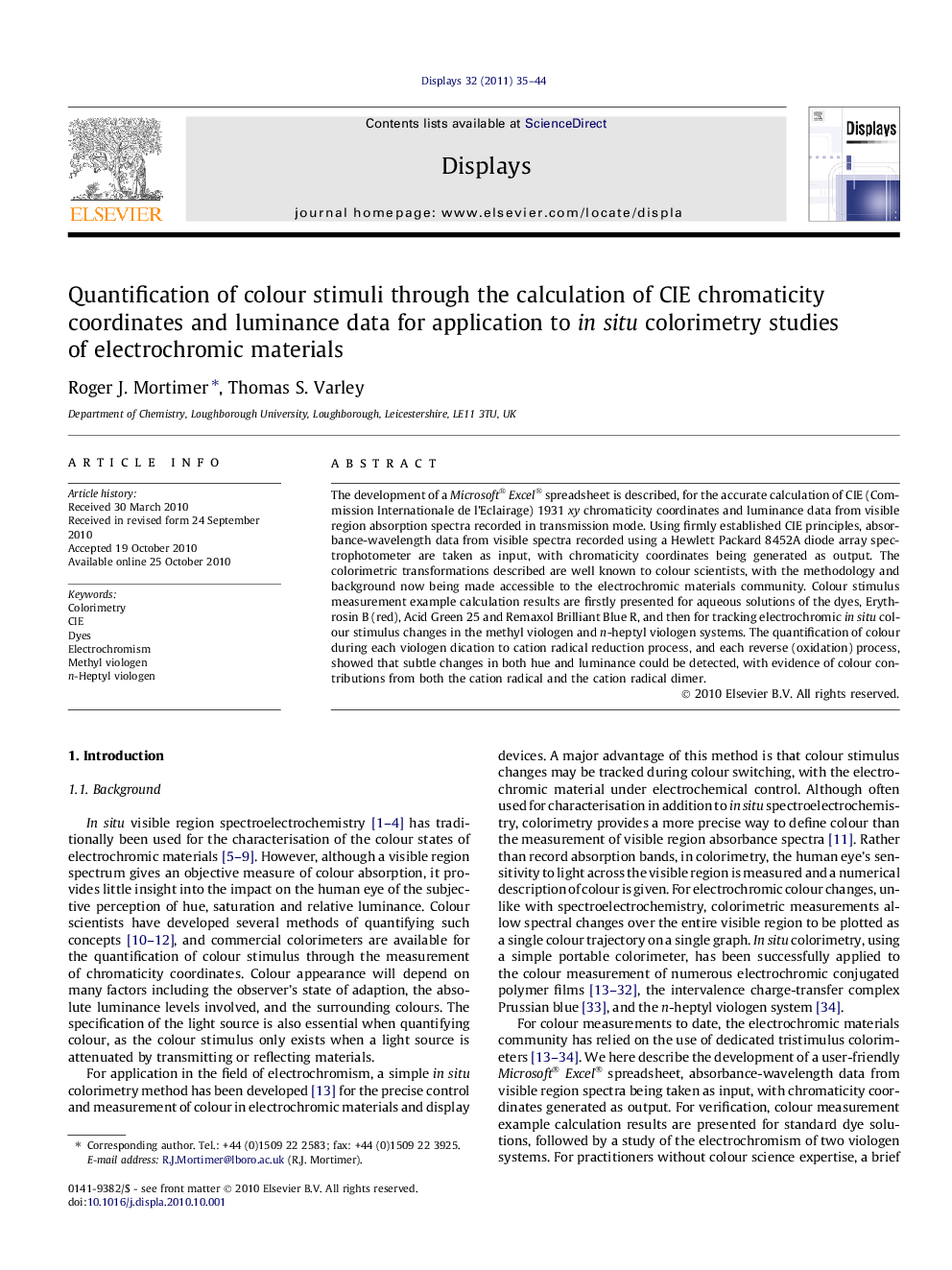| Article ID | Journal | Published Year | Pages | File Type |
|---|---|---|---|---|
| 537914 | Displays | 2011 | 10 Pages |
The development of a Microsoft® Excel® spreadsheet is described, for the accurate calculation of CIE (Commission Internationale de l’Eclairage) 1931 xy chromaticity coordinates and luminance data from visible region absorption spectra recorded in transmission mode. Using firmly established CIE principles, absorbance-wavelength data from visible spectra recorded using a Hewlett Packard 8452A diode array spectrophotometer are taken as input, with chromaticity coordinates being generated as output. The colorimetric transformations described are well known to colour scientists, with the methodology and background now being made accessible to the electrochromic materials community. Colour stimulus measurement example calculation results are firstly presented for aqueous solutions of the dyes, Erythrosin B (red), Acid Green 25 and Remaxol Brilliant Blue R, and then for tracking electrochromic in situ colour stimulus changes in the methyl viologen and n-heptyl viologen systems. The quantification of colour during each viologen dication to cation radical reduction process, and each reverse (oxidation) process, showed that subtle changes in both hue and luminance could be detected, with evidence of colour contributions from both the cation radical and the cation radical dimer.
Research highlights► Chromaticity coordinates are calculated from visible region absorption spectra. ► The calculations are based on firmly established CIE principles. ► In situ colorimetry of electrochromic changes is demonstrated. ► Dynamic colour switching in electrochromic viologens is quantified. ► Viologen radical cation dimerisation is important for colour change quantification.
